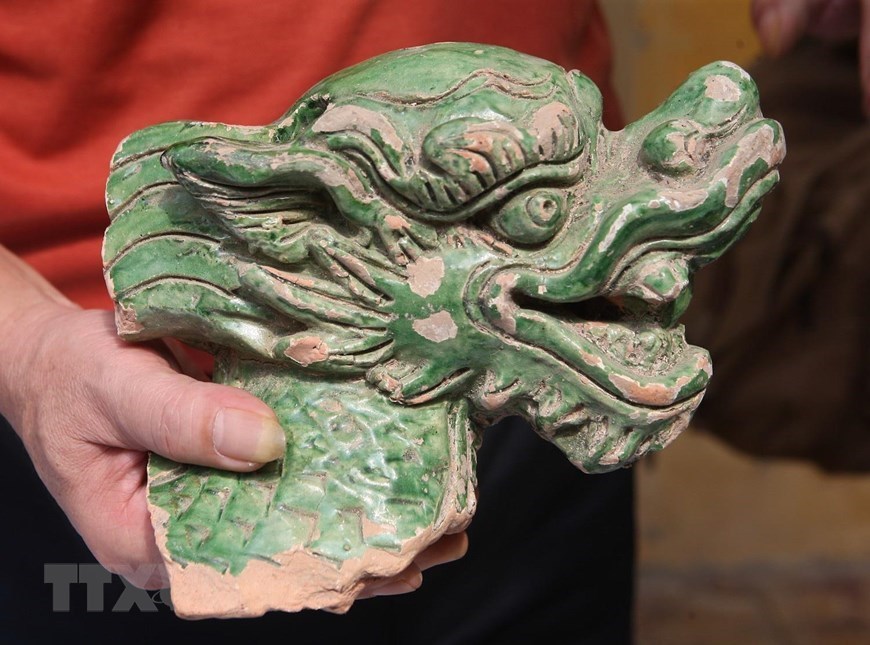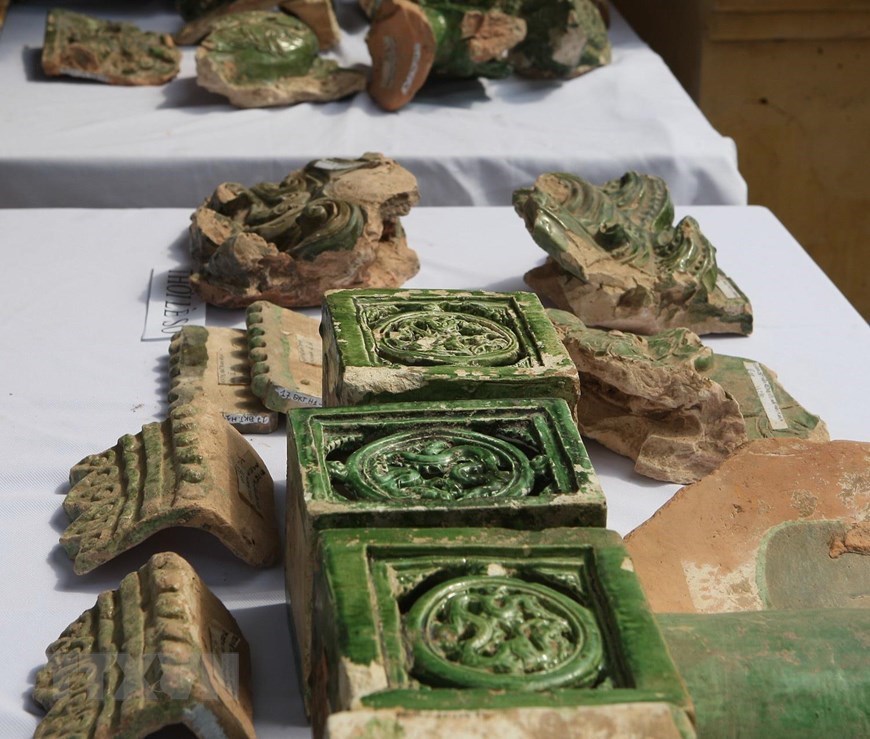 |
| Ceramic objects unearthed at the site. |
The discovered objects have been determined to have originated from the Đại La Citadel era (eighth-ninth century), the Lý Dynasty (1009-1225), Trần Dynasty (1225-1400), Lê Dynasty (1428-1527) and Nguyễn Dynasty (1802-1945).
The excavation was on the northeast side of Kính Thiên Palace, which is in the Nguyễn Dynasty palace area inside the ancient citadel complex.
In an area of nearly 1,000sq.m, archaeologists identified 20 layers of soil each measuring 20-30cm thick.
Layers from different eras are stratified fairly consistently, with artefacts from the most recent times found near the surface and earlier pieces arrayed in the layers below.
The layers were similar to those found in earlier excavations at the site, said former director of the Việt Nam Archaeology Institute Professor Tống Trung Tín.
The excavation also revealed traces of typical architectural features of the Lý, Trần, Lê Sơ (Early Lê) (1428-1527) and Lê Trung Hưng (1533-1789) dynasties.
 |
| Objects found at the site include baked clay objects, ceramics, wooden pieces, metal objects, gold and blue glazed from the Lê Sơ Dynasty. |
Tín said they found remnants of checkered cement tiles and flower beds from the Nguyễn dynasty; roads, a road foundation, traces of ponds and stone foundations from the Lê Trung Hưng Dynasty; and a long brick path running in the north-south direction flanked by ponds, from the Lê Sơ Dynasty.
The structures were destroyed by the construction of a deep lake with stone foundations and brick walls, dating back to the 17th or 18th century, he said.
In the latest excavation, archaeologist discovered another stone foundation.
“We don’t know the function of the foundation yet but we believe it played an important part in the Kính Thiên Palace area,” Tín said.
Objects found in the excavation included baked clay objects, wooden details, metal objects, a great number of gold- and blue-glazed tiles and decorative materials for palace roofs of the Lê Sơ Dynasty.
Prof Nguyễn Quang Ngọc, vice chairman of the Việt Nam History Science Association, said the excavation had helped clarify the ancient Hồng Đức Map (published in 1490), which provides historical information on the city under Lê Trung Hưng’s reign in the 17th century.
“Looking at the map, we will see the east side of Kính Thiên Palace has the words ‘Ngọc Hà’ (many people have translated this as as ‘Gem River’) and the west side has the word ‘Chí Kính’,” he said.
“When King Lý Công Uẩn built Càn Thiên Palace, there were many bridges surrounding it,” he said. “There might have been many canals and rivers around. Historical documents also said people came to consult the king by boat.”
“This means that the water system used to exist here from early time but has been changed much,” Prof Ngọc said. “In Lê Trung Hưng’s reign, in front of Ngọc Hà Palace there must have existed a river or a lake, which was drawn on the map. More exactly the lake was there in front of Vạn Thọ Palace, where the King stayed.”
“I strongly believe that if we understand the Hồng Đức Map, we will understand the scale of Ngọc Hà Palace,” he said. “I think the stone foundation we found this time is the foundation of the palace. The roof of this palace, after being destroyed, fell into the river. That’s why we found objects of the Lê Sơ and Lê Trung Hưng reigns together with the Lý and Trần dynasties.”
Ngọc suggested opening an excavation to the east to find foundations of the palace of the Lê Trung Hưng Dynasty.
“If we find traces of Ngọc Hà Palace, we will know the central axis of Thăng Long Royal Citadel under Trần Dynasty,” Ngọc said. — VNS
 Archaeologists have found a stock of soil with artefacts from various times throughout history at a site excavated last year near Kính Thien Palace inside Thang Long Royal Citadel Complex in downtown Hanoi.
Archaeologists have found a stock of soil with artefacts from various times throughout history at a site excavated last year near Kính Thien Palace inside Thang Long Royal Citadel Complex in downtown Hanoi.